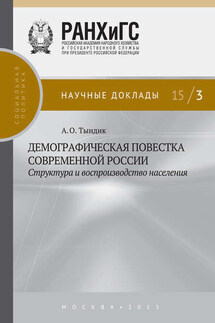Scientists have identified 5 episodes of the migration of ancient people from Africa to Arabia. According to the results of an international study published in the journal Nature, the first people came to Arabia from Africa 400 thousand years ago. After that, there were at least four more waves of migration, each of which coincided with a short period of decreasing aridity in the region, when the Arabian Peninsula was covered with greenery and numerous lakes. Archaeological excavations have been conducted on the territory of Saudi Arabia for a long time, but until now they were limited to coastal areas and small oases, and the vast interior remained unexplored.
Also, archaeologists from the Max Planck Institute for the History of Mankind in Jena (Germany), together with colleagues from other countries and with the support of the Ministry of Culture of Saudi Arabia, carried out work on the Hall-Amaishan 4 site and in the Jubba oasis in the Nefud desert in the north of the Arabian Peninsula and found thousands of stone tools and animal bones, indicating repeated stay in this area of ancient people.
Geographically, the finds are confined to the coastal zone of a large lake, once located between two large dunes. The researchers identified six periods of fullness of the lake, with five of which the finds of artifacts coincide in time.
The results of geochronological analyses of stone tools showed that people lived here about 400, 300, 200, 100 and 55 thousand years ago. The authors determined the age of the finds by the method of luminescent dating, which records the time during which tiny grains of sand on the surface of artifacts were exposed to sunlight.
The authors note that each of the five phases of human stay on the shores of the lake in the Nefud desert is characterized by its own type of material culture – from the Acheulean culture of the "hand axe" of the Lower Paleolithic to the Middle Paleolithic technologies of stone flakes – by which it is possible to trace the change in human culture over time.
In some cases, the differences in material culture are so great that, according to researchers, this indicates the simultaneous presence in the region of various groups, and possibly species of hominins who came to Arabia, both from Africa and Eurasia. This is confirmed by animal fossils. Most of them are of African origin, but there are also those who came from the north.
The discovery of large mammal fossils in the middle of this hyper—arid desert is a unique event. The most remarkable was the discovery of several fragments of hippo bones. Currently, their habitat is limited to humid areas of Africa, and their presence in the Nefud desert over the past 400 thousand years is a convincing proof that the Arabian Peninsula was much wetter in the past than it is today, against the general background of the arid climate on the peninsula, phases of increasing precipitation periodically occurred, which led to the formation of thousands of lakes, rivers and swamps. At that time, favorable conditions for the migration of people and animals were established in the region. Arabia has become a kind of migration hub, one of the meanings of the English word hub is the center of attention, interest, activity.
From the book by Tikhomirov A.E. "Migrations of peoples. Genesis as a historical source. The Science of the Old Testament": "Primitive humanity, settling from the west (Africa) to the east (the Arabian Peninsula) and developing new lands in the depths of Asia, split into two groups of populations in the Ancient Stone Age: black and white. This was due to a decrease in the amount of melanin, brown and black pigments. Migration flows were different, depending on the climatic and geographical conditions of the area. For example, the western part of modern Russia could serve as migration routes for Africans who were heading north, where 100 – 70 thousand years ago there was a completely different climate – warm and favorable for living, the area of the modern Arctic Ocean. Over the past time, archaeologists have managed to discover the remains of more than a hundred dwellings of the Ancient Stone Age, located in settlements in Europe and Northern Asia, for example, the Kostenok district in the modern Voronezh region of Russia. Of course, the most studied settlements of the late Paleolithic in the range of 30-12 thousand years BC. They were located in the valleys of large and small rivers, such as the Dnieper and its tributaries Desna, Seim, Ros. Now the remains of these settlements lie in the thickness of the first and second above-floodplain terraces at an altitude of 5-10 to 30 or even more meters above the river level. But in the late Paleolithic, the water level was much higher, and the dwellings stood on the very shore."
In the early Paleolithic era, it was the Arabian Peninsula that became the first place from where humanity began its march across the planet. In Saudi Arabia, 46 Lower Paleolithic archaeological sites containing stone tools and animal bones were found in the Nefud desert near the dried-up beds of Paleozoic lakes. In the parking lot of Homo erectus Saffaqah, located in the center of Saudi Arabia, archaeologists found approx. 8 thousand artifacts, including a huge number of Acheulean tools made of andesite. Several stone tools found in a sandy layer of soil under the bottom of a dried-up lake in Ti-al-Gad in the Nefud desert date back to the period between 300 and 500 thousand years ago. Luminescent chronology data indicate that 130 thousand years ago the Arabian Peninsula was relatively hotter, the amount of rainfall was higher, due to which it was covered with vegetation and habitable land. At that time, the level of the Red Sea fell and the width of its southern part was only 4 km. This for a short time created the opportunity for people to cross the Bab-el-Mandeb Strait, through which they reached Arabia and founded a number of the first sites in the Middle East – such as Jebel Fayya. Early migrants, fleeing from climate change in Africa, crossed the "Gates of Sorrow" to the territory of modern Yemen and Oman and further across the Arabian Peninsula in search of more favorable climatic conditions. There is a distance of 2000 km between the Red Sea and Jebel Fayya (UAE), where the uninhabitable desert is now located, but about 130 thousand years ago, at the end of the next ice age, the Red Sea was shallow enough to cross it by wading or on a small raft, and the Arabian Peninsula was not a desert, and a green-covered area.














